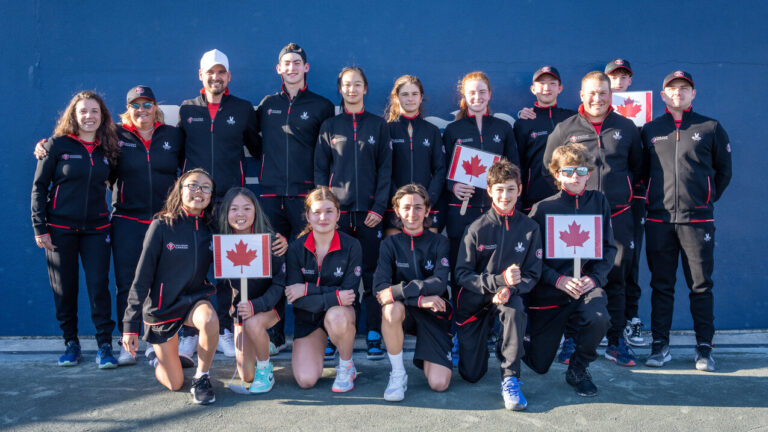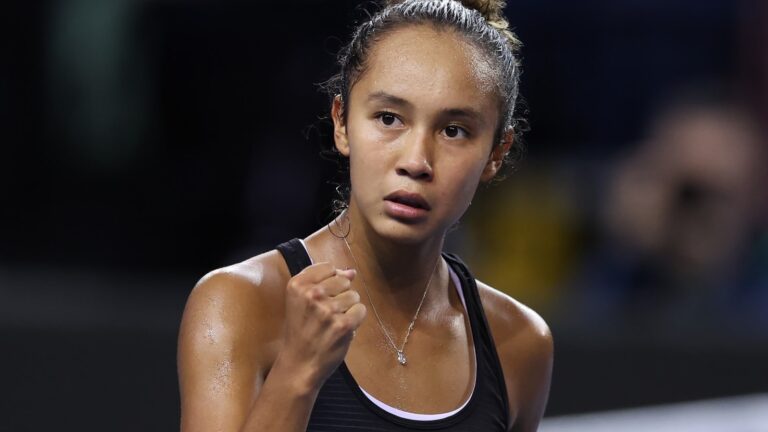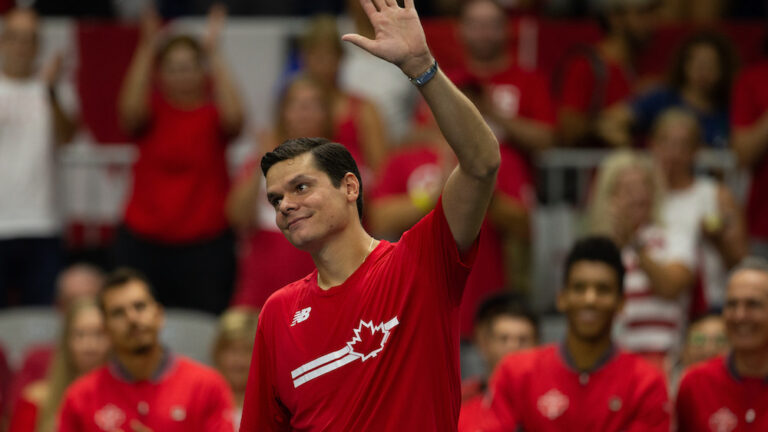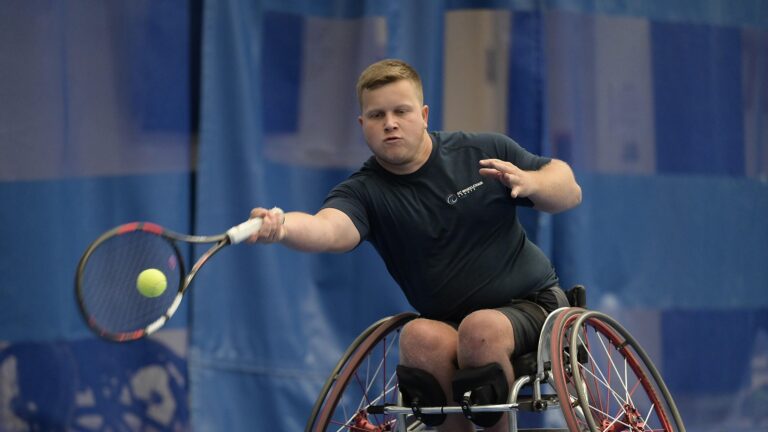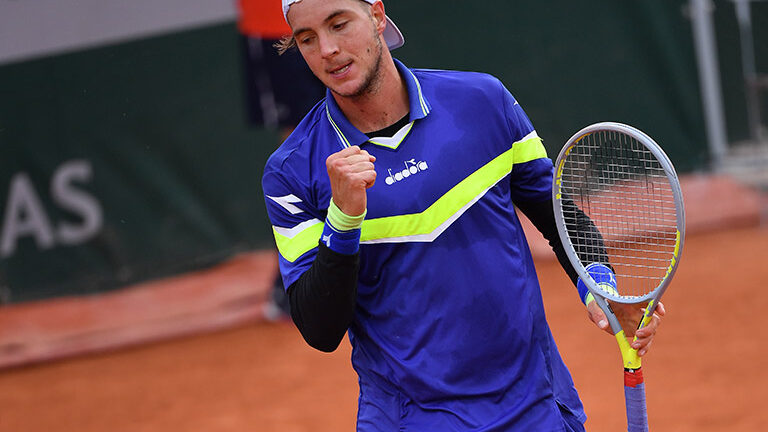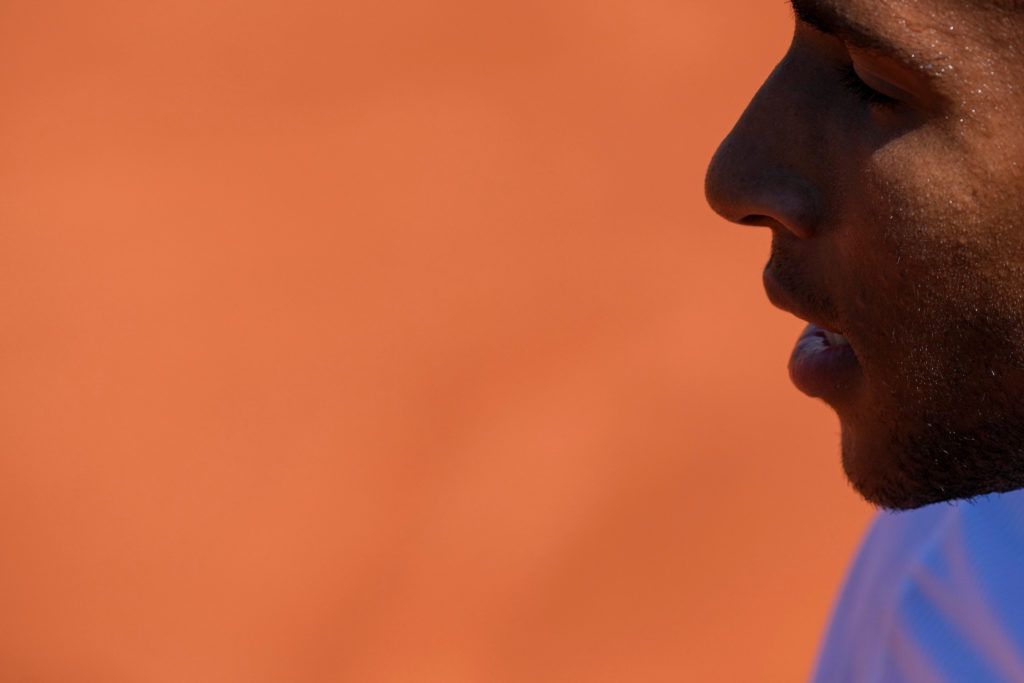
Photo : Martin Sidorjak/Tennis Canada
On April 8, the tennis world was surprised and intrigued by the unexpected partnership between Félix Auger-Aliassime and Toni Nadal, the sport’s most famous uncle and former coach of living legend you-know-who.
Already an excellent clay court player, the young Quebecer could only benefit from the alliance and would zoom right up to the very top of the rankings. Or so we thought.
Five tournaments and ten matches in, it’s been a hard slog. With four wins and six losses, the scorecard just doesn’t meet immediate expectations. Five of the six defeats were at the hands of lower ranked players. At three of the five events in which he competed, Félix was sent packing in his opening round.
In the past two months, it feels as if we’ve been watching another Félix out there: less net play, less risk taking, less boldness, messier. What’s up with that?
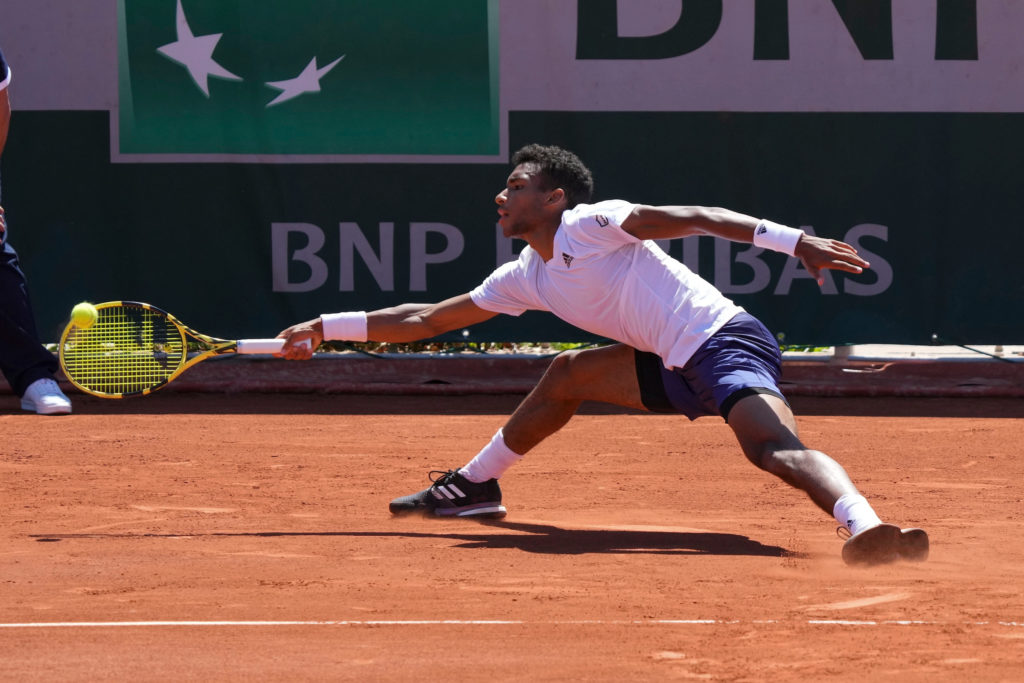
I turned to the same wise man who commented the promising pairing right here a couple of weeks ago.
Cool, calm, collected and accomplished, Louis Borfiga had a different take than the 20-year-old’s fanbase (because, yes, Félix is still only 20).
“We should all keep our cool!” recommends the former head of elite development at Tennis Canada, who’s just a few weeks shy of his return to France and retirement. “I’m not blind—of course the clay season wasn’t what we had hoped for Félix. He’s clearly not playing with the same confidence as when he climbed in the rankings two years ago.”
Confidence. That’s really the keyword, isn’t it?
Because the intangible and vital element that separates the Top 20 or 30 from the Top 1000 isn’t talent, it’s confidence.
It also takes a while for a new player-coach relationship to start paying off.
“Let’s give him some time. Who knows what recommendations or changes Toni Nadal is trying to bring to Félix’s game? While the athlete works on applying them, he may lose sight of the instinct and creativity he was known for,” explains Borfiga. “We knew Félix had to be more tenacious in long rallies. In the past weeks, he hasn’t been coming to the net as much. He’s figuring things out and hesitating. Let’s be patient and wait for the magic to happen. I really think it’s too early to be worried. Let’s hope he finds his confidence on grass. Then, the joy and all the rest will follow.”
Speaking of the grass swing, Félix will be getting things started in Stuttgart this week along with his friend and fellow Canadian Denis Shapovalov, who skipped Roland-Garros.
As for Toni Nadal, he’s also said that we need to wait it out, asserting that it’s a question of years, not months. Speaking to Québec sports network RDS ahead of the French Open, the veteran coach professed his admiration for Auger-Aliassime’s athletic abilities, which, he says, are among the most impressive in the ATP. Getting the results they’re aiming for could take over a year.
“In my opinion, Félix has two years to be among the best,” said Nadal. “There are eight, nine or ten players who are above the rest. It’s not easy to beat someone like Medvedev, Thiem or Djokovic. It’s not easy to improve your game, but he has time to learn. Every day is an opportunity to add something positive to his game, whether it’s his return or volley, for example.”
Is 2021 the year of injuries?
Roger Federer, Ashleigh Barty (twice), Jennifer Brady (twice) Petra Kvitova, Grigor Dimitrov, Simona Halep, Denis Shapovalov, Venus Williams, Bianca Andreescu, Hubert Hurkacz, Casper Ruud, Elise Mertens, Victoria Azarenka, Garbine Muguruza, Kei Nishikori, Aslan Karatsev…
I’ll stop there.
They’ve all had to withdraw or retire from a tournament due to injury.
Scary stuff.
By the way, that list only goes five weeks back (late April) and includes only headliners and members of the Top 30. You should see the complete list of injured players since the start of 2021!
Very scary stuff.
Gilles Ayotte of Mont-Tremblant, who follows this blog, wonders if that’s a record or just business as usual.
Great question!
I promptly called up Nicolas Perrotte, national fitness coach at Tennis Canada, who you may have seen in the player boxes of players such as Bianca Andreescu, Denis Shapovalov, Félix Auger-Aliassime, and other Canadian aces at WTA, ATP, Billie Jean King Cup and Davis Cup events.
Before sharing his thoughts on the inevitable collateral damage of the COVID-19 pandemic, the 49-year-old affirmed that there is a bias—or selective memory—when it comes to 2021 being particularly injury-prone. That said, the past 15 months have certainly skewed the statistics.
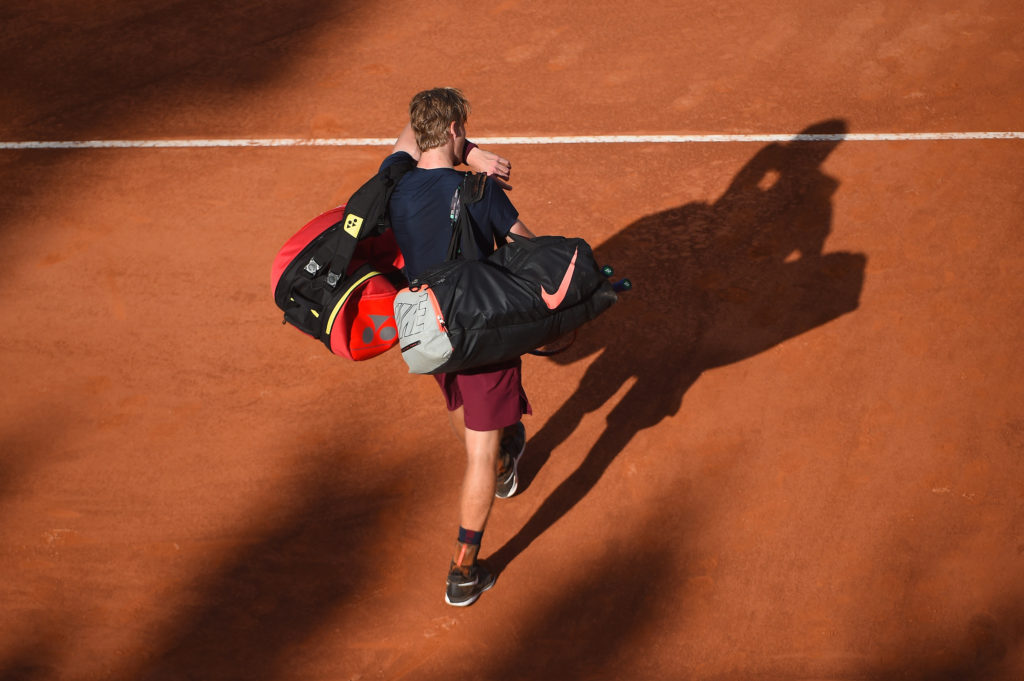
According to Perrotte, even with the influx of new top talents, athletes tend to have longer careers. By assembling brigades of experts to cover every possible aspect of their game, these human machines are investing in their long-term tennis capital.
“Indicative of this trend is that fact that the players’ average age has increased in the past decade,” he confirms, citing this 2011 study.
And there’s more.
“In 2021, on the women’s side, there are 24 players in their 30s in the WTA Top 100, and several who are competing at Roland-Garros have children. There are 16 players 22 years and under in the Top 100, including Bianca and Leylah. On the men’s side, players 30 and over make up about 40% of the ATP Top 100 with three in the Top 10. There are 15 players 22 and under, including Shapo and Félix,” he explains. “So, we have to account for this evolution among the players who choose to maintain their tennis capital and have longer careers through solid performances by properly managing their injuries and getting support from various experts.”
Of course, the pandemic and mandatory quarantining are part of the new equation and may partly explain why so many talented and complex pros are dropping out.
“Confinement and four months of cancelled events last year stopped some players in their progress, but there was also an opportunity for physical and technical development. So, some negative and some positive,” he concludes. Still, the extraordinarily rare circumstances introduced a number of uncommon variables.
“There’s no substitute for the intensity of competition and drive to adapt to new conditions. The most difficult parameter to tackle is the mental impact the period represents. A lot of references changed. Players had to set new objectives. Everyone reacts in a different way to new tournament rules, the absence of fans in the stands and the distance from their families. It’s possible to establish a link between this new mental load, motivation levels and stress-related injuries. I’d be curious to read the studies based on objective data conducted during this period,” adds Perrotte.
The moral of the story is that while equipment, game and training methods have all evolved and athletes are in better shape than ever, the one thing that hasn’t changed is that an injury requires time to heal, just like it did 30 or even 50 years ago, technology or not.
Tennis players have always gotten injured. And they’ll keep getting injured.
At a crossroads
Some mornings are tougher than others. And one needs a few more cups of coffee.
Like this morning of june 8th, seeing that post on Bianca Andreescu’s Instagram account, around 6 am, and announcing the end of her three-years-long professional partnership with coach Sylvain Bruneau
CBC french sports journalist, Antoine Deshaies, who covered Bianca’s incredible US Open run in 2019, remembered this funny comment from Bruneau as one of the nominees for WTA coach of the year in 2019. With his well known humility, Sylvain reminded everyone that no nominees from the previous year was still with their player…
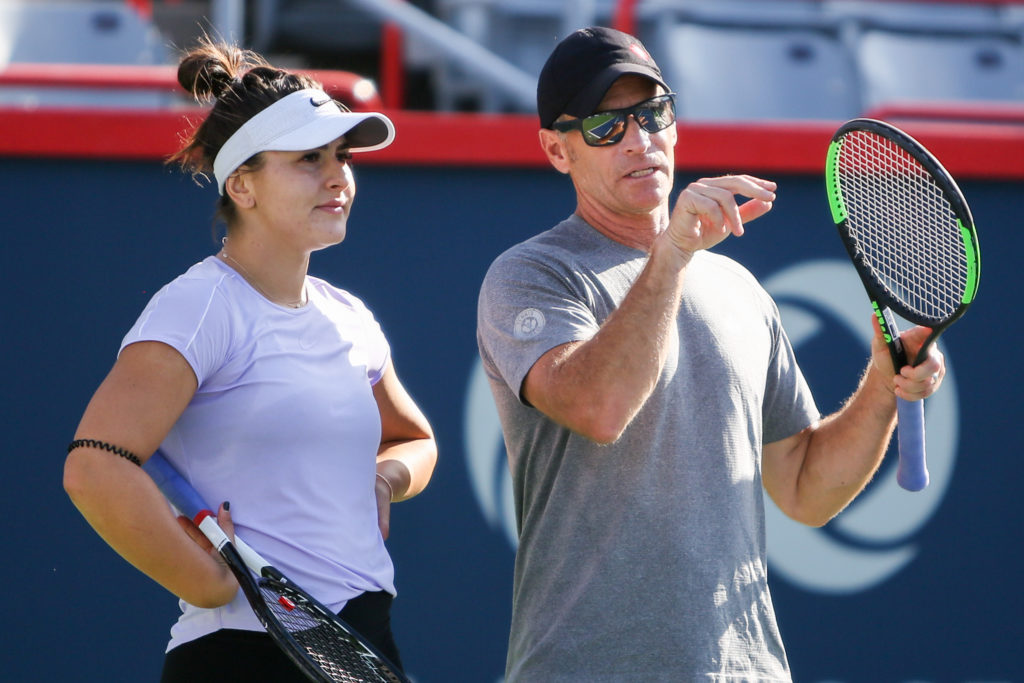
Indeed, those coach-player partnerships, WTA or ATP, are most of the time short-lived. The pro-tennis collaborations lasting more than 10 years, on both tours exists in very small numbers. And in their vast majority, their ending is not caused by any discord or friction.
It would be a good time to simply use the expression “being at a crossroads.”
While Bianca will go her way aiming for new titles, Sylvain will be concentrating on his role as Head of Women’s Pro and Transition at Tennis Canada.
Health, safety, wisdom
Three words that describe how professional tennis players and their immediate entourage should tackle strains and injuries and which are likely to have guided Roger Federer’s decision to withdraw from Roland-Garros after his third win.
Despite the tremendous affection the tennis world has for him, the Swiss Magician was criticized by fans and sports writers for his choice, which manages to raise its share of issues:
- Is it unfair to the opponent who lost to Federer? (could he take Fed’s place in the next round?)
- How will Matteo Berettini, who was slated to be Federer’s next opponent, benefit from the rest, especially since the Italian’s next foe will have played two, three or four more hours to get to the same round?
- How will the tournament deal with the inevitable grumbling after losing one of its headliners?
- Will fans start to wonder if athletes are actually injured or just making up excuses to explain their easy exits?
Because Roger is Roger, most expressed their support. And so did the ATP, the other Grand Slams and even a fellow champion who knows exactly what it’s like to play injured.
Should tennis change or stick with the status quo?
What do you think?
What about Repentigny?
The last match on Monday night (June 7) at Roland-Garros pitted No.81 Marta Kostyuk of Ukraine against current titleholder and World No.9 Iga Swiatek of Poland.
On Tuesday, Alejandro Davidovich Fokina of Spain played in the quarters of a major for the very first time in his career.
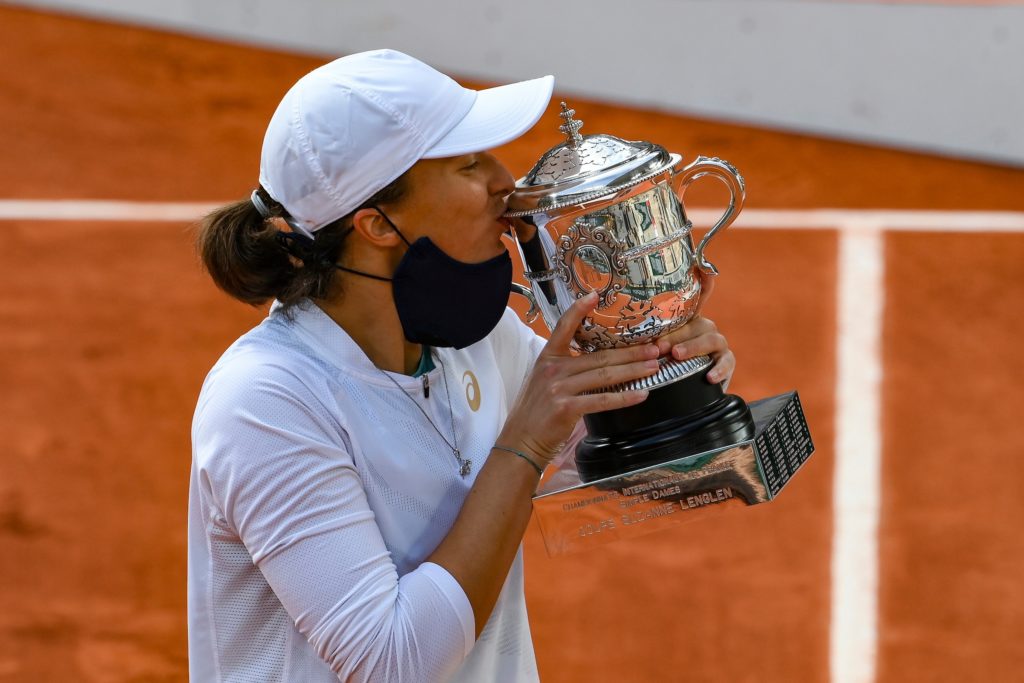
As the second week of the Parisian Slam gets rolling, seeing these young people in action brings back fond memories for fans in the municipality of Repentigny, an eastern suburb of Montréal.
Swiatek (20 years old) and Kostyuk (almost 19) respectively took the top honours in the women’s final of the 2016 and 2017 National Bank Canadian Junior Open Championships, which, in three decades, have become a reference in international junior events outside the Slams.
The very same year Swiatek hoisted her championship trophy, Davidovich Fokina did too.
Fans in Repentigny and Montréal had the chance to catch the athletes in action before they joined the global elite and became less—how shall I say this?—approachable. Indeed, the beauty of junior, ITF and even Challenger tournaments is that fans get to see fantastically talented players up close and at an affordable price.
Between 1986 and 2019, Quebecers flocked to Parc Larochelle to cheer on our Canadian hopefuls and future international superstars, including Bianca Andreescu, Françoise Abanda, Eugenie Bouchard and Rebecca Marino, who won in 2015, 2012, 2011 and 2007, respectively, as well as Andy Murrray (2003) and Jo-Wilfried Tsonga (2002).
Auger-Aliassime, Shapovalov, Raonic, Pospisil and Fernandez all competed, and so did a few other teens who didn’t win but would go on to become household names: Barty, Pliskova, Halep, Svitolina, Garcia, Azarenka, Tsitsipas, Zverev and Thiem.

At the time of writing, Tennis Canada was working with the ITF to assess whether it will be possible to host the championships this September, with all required safety measures and without the mandatory quarantine for foreigners who enter Canada.
Fingers crossed!
Get in touch with me!
Email: privard@tenniscanada.com
Twitter: @paul6rivard
Follow all our Canadians in action here.
